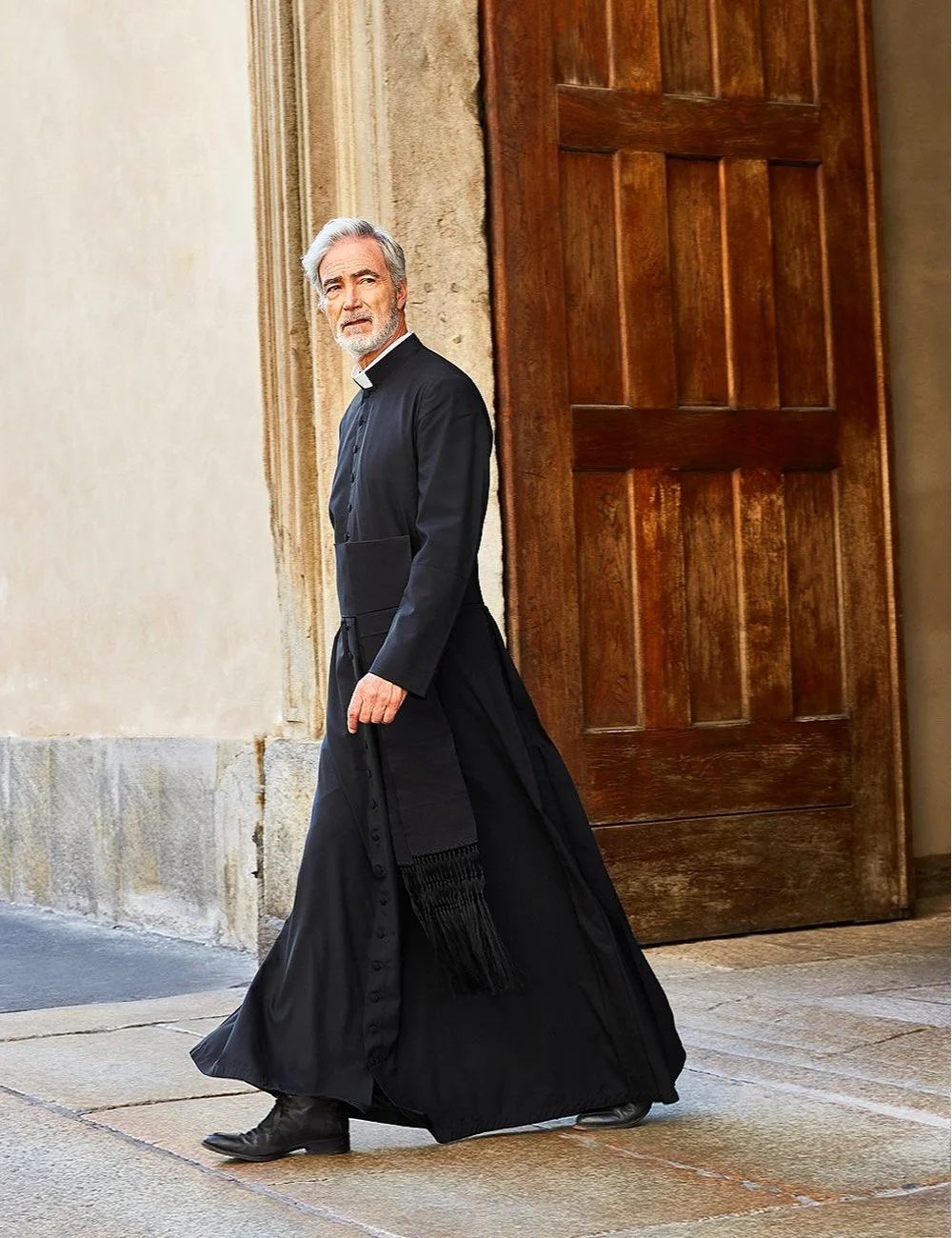Intercessory Prayer and Spiritual Warfare: The Canon Regular as Watchman and Intercessor
In the quiet hours before dawn, when the world still slumbers and the veil between heaven and earth seems thin, the Canon Regular of the Sacred Heart of Jesus kneels before the tabernacle. His hands are lifted not in self-contemplation, but in intercession—for the wounded, the wandering, the weary. He is not merely a man of prayer; he is a watchman on the walls, a combatant in the invisible war, a priestly sentinel who stands between heaven and earth, pleading for mercy, healing, and deliverance.
In the tradition of the Church, intercessory prayer and spiritual warfare are not fringe devotions but essential expressions of the Church’s maternal care and Christ’s priestly mission. Through the charism of the Canons Regular of the Sacred Heart of Jesus, these two dimensions are united in a life of Eucharistic adoration, pastoral presence, and sacrificial love.
I. The Sacred Heart: Furnace of Intercession
The spirituality of the Canons Regular is rooted in the Sacred Heart of Jesus—a heart that burns with love, bleeds with compassion, and intercedes without ceasing. The Heart of Christ is not passive; it is pierced, poured out, and perpetually pleading before the Father. In this Heart, the Canon finds both his refuge and his mission.
To pray in union with the Sacred Heart is to enter into Christ’s own intercession. As Hebrews 7:25 declares, “He always lives to make intercession for them.” The Canon Regular, conformed to this priestly love, becomes a living intercessor, offering his life as a bridge between God and His people.
This intercession is not abstract. It is specific, embodied, and often costly. It includes:
Daily Eucharistic Adoration, where the Canon offers silent petitions for the Church and the world.
The Divine Office, chanted not as routine but as a liturgical cry for mercy.
Personal prayer, where names, faces, and wounds are brought before the Lord.
II. Spiritual Warfare: The Battle Beneath the Surface
To intercede is to enter the fray. The Canon Regular is not naïve about the spiritual landscape. He knows that beneath the surface of pastoral life lies a battlefield—where souls are contested, truth is obscured, and evil seeks to devour. Spiritual warfare is not a metaphor; it is a reality.
But this warfare is not waged with anger or fear. It is fought with humility, holiness, and the weapons of the Spirit:
The Rosary, wielded like David’s sling against Goliath.
The Word of God, sharper than any two-edged sword.
The Sacraments, especially Confession and the Eucharist, which disarm the enemy and fortify the soul.
Fasting and penance, which break strongholds and open hearts to grace.
The Canon Regular engages in this warfare not as a lone warrior but as a priestly intercessor, standing in the breach like Moses on the mountain, like Elijah on Carmel, like Christ in Gethsemane.
III. The Canon Regular as Exorcist and Healer
While not every Canon is formally an exorcist, each is called to confront evil with the authority of Christ. This may take the form of:
Deliverance prayers for those oppressed by spiritual darkness.
Blessings of homes and families, reclaiming space for the Kingdom.
Pastoral counsel that unmasks lies and restores truth.
Sacramental ministry, especially the Eucharist and Reconciliation, which heal the deepest wounds.
In all this, the Canon does not act from his own power but from the Heart of Jesus, whose mercy disarms the enemy and whose wounds bring peace.
IV. Intercession in the Domestic Church
In the emerging pastoral model where the Canon Regular visits dispersed domestic churches, intercessory prayer and spiritual warfare take on a new intimacy. The Canon enters homes not only as a guest but as a guardian, blessing thresholds, praying over children, and consecrating families to the Sacred Heart.
In these visits, he may:
Lead the family in prayer, invoking protection and peace.
Anoint the sick, breaking the chains of fear and despair.
Pray over those afflicted, gently discerning spiritual oppression.
Teach the family to pray, forming them as intercessors in their own right.
Thus, the Canon becomes a mobile sanctuary, carrying the fire of intercession from house to house, reclaiming territory for Christ.
V. The Liturgy as Battlefield and Banquet
The Sacred Liturgy is the supreme act of spiritual warfare. In the Mass, the Canon Regular stands at the altar not only as celebrant but as combatant—offering the sacrifice of Christ that vanquishes sin, reconciles enemies, and renews the cosmos.
Every Kyrie is a cry for mercy. Every Gloria is a shout of victory. Every Sanctus is a joining of angelic ranks. Every Agnus Dei is a plea for peace in the midst of battle.
The Canon’s liturgical life is thus inseparable from his intercessory mission. He does not merely say Mass—he offers it for the world, bearing the names of the suffering in his heart, lifting them into the chalice, and placing them on the paten.
VI. Mary and the Angels: Allies in the Fight
No intercessor fights alone. The Canon Regular invokes the Blessed Virgin Mary, Queen of Angels and Refuge of Sinners. Her Rosary is his sword; her fiat is his model. With her, he stands beneath the Cross, offering the world to the mercy of God.
He also calls upon St. Michael and the angelic hosts, who battle unseen but not unfelt. In every blessing, every exorcism, every whispered prayer, the Canon is surrounded by these heavenly allies.
Conclusion: The Canon as Flame and Shield
In a world that often mocks prayer and denies the spiritual realm, the Canon Regular of the Sacred Heart of Jesus stands as a sign of contradiction—a man of silence in a noisy age, a man of intercession in a world of self-interest, a man of spiritual warfare in a culture of denial.
He is both flame and shield: a flame of love burning before the tabernacle, and a shield of prayer raised over the vulnerable. Through his intercession, the wounded find healing. Through his warfare, the captives find freedom. Through his presence, the Sacred Heart of Jesus is made visible, tangible, and victorious.
PLEASE NOTE: PASTORAL 11 REQUIRES FURTHER TRAINING


